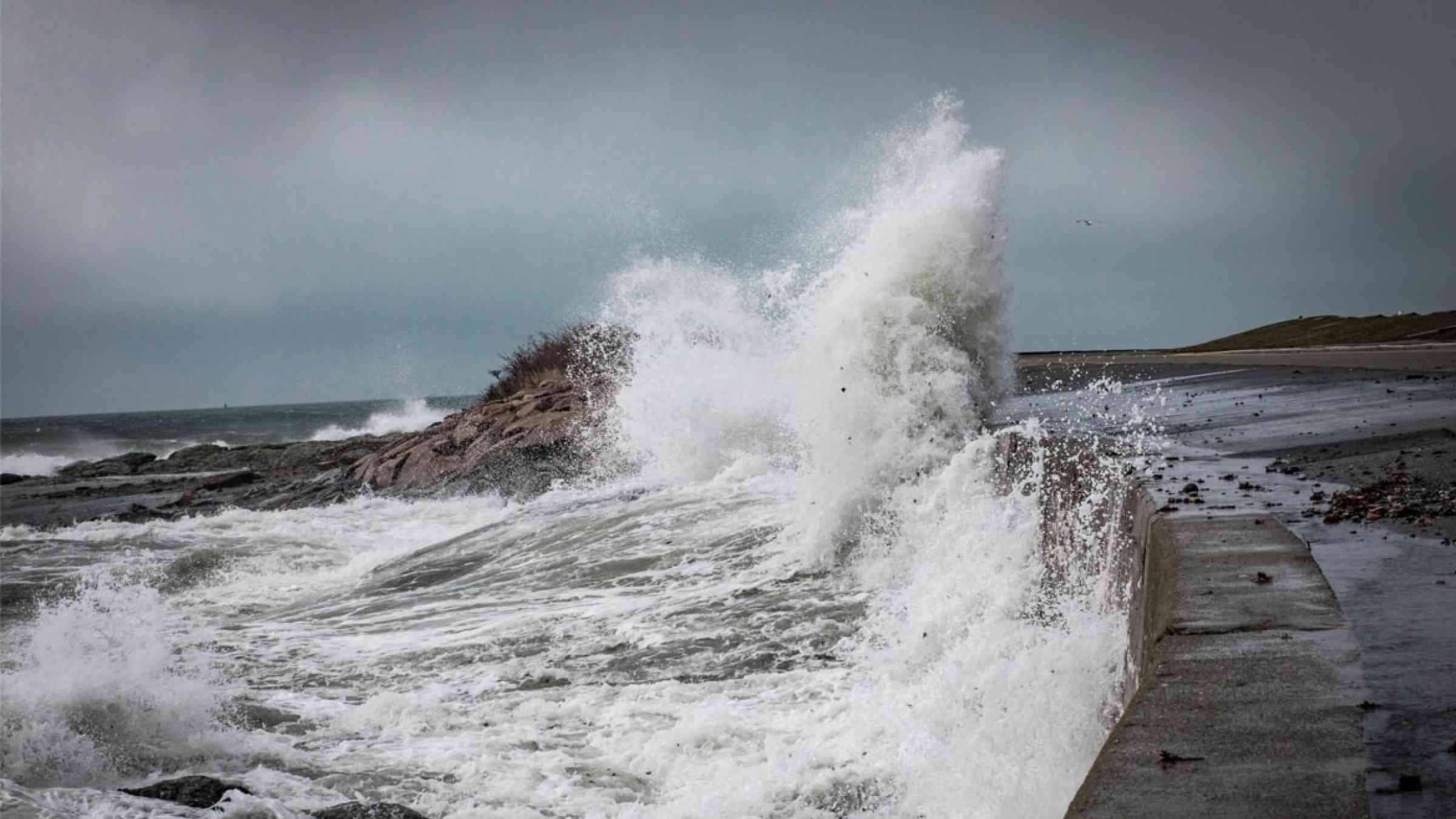Navigating uncertainty

In a world beleaguered by rising violent conflict, the impacts of the climate crisis, deepening mistrust in institutions, and the sharpest drop in human development in decades, we find ourselves confronting a perfect storm of evolving threats and outdated responses.
Figuring out how best to navigate this storm, sometimes quite literally, leaves many with a sense of uncertainty and dread about their lives and future. As the reoccurrence of disasters intensifies, the growing levels of anxiety among communities that live in fragile climate settings is palpable.
According to the latest Global Assessment Report on Disaster Risk Reduction, disasters are projected to increase by 40 percent in this decade alone. This puts people around the world at increased risk from many types of shocks. Simply responding to these on an individual basis won’t be enough. To save lives, livelihoods, and any hope of achieving the Sustainable Development Goals, we need to ramp up our development efforts, by anticipating the needs of the most vulnerable, regardless of the type of disaster.
While we can’t entirely prevent disasters from occurring, we can support individuals, communities, and countries to be better prepared. So, on this International Day for Disaster Risk Reduction (IDDRR), our message zeros in on the anticipatory tools and actions that are revolutionizing early warning and early action – supporting communities and institutions to put into place capabilities and systems that provide alerts, allowing people to anticipate and measure levels of risks and act in time.
This means making new technologies – and the ability to deploy them – available to all state and non-state actors who need to be a part of this effort. While IDDRR is a moment to take stock of progress made and to advocate action for the challenges ahead, it should also remind us of the unprecedented collective capacity we have – and need to deploy – to define a faster more agile way forward.
Today, UNDP offers new tools and resources to enable such choices. Through interconnected approaches that focus on forecasting and anticipation in planning and actions on prevention, response, and recovery, we’re doing more to help countries and communities understand the risks they face, and to better manage and reduce these risks.
Inclusive early warning and early action are vital to protect hard-won development gains, reduce the risk of recurrent disasters (and the repeating humanitarian case load) and build resilience so communities can get back on their own feet faster.
We can see this kind of “future smart” development programming at work throughout the Pacific.
In Vanuatu, UNDP works with government and civil society to leverage foresight to anticipate challenges associated with disasters, climate change, and pandemics. It draws from a 400-year-old practice called nasara, a governance system where villages would come together to explore collective strategies to deal with future risks and challenges, an ancient form of planning.
Vanuatu’s Ministry of Internal Affairs, with UNDP support, integrated this anticipatory planning into its latest development plans, applying new instruments and analysis to help navigate future risks with foresight and action.
Reaching across the Asia-Pacific region, UNDP is now implementing a Regional Horizon Scanning Initiative to identify and analyze development trends, risks, and uncertainties. Rooted in a collective intelligence process, the scan provides a more comprehensive risk analysis that can go deeply local or be aggregated for different sub regional country clusters than before. The initiative identifies intersecting social, technological, economic, environmental, and political factors to design future-fit policies and smarter development trajectories based on diverse local conditions. Recent examples of this work can be seen in Cambodia and Bhutan where governments have begun using such information to formulate national development plans.
In 2023 UNDP will expand its efforts by launching the Risk Anticipation Hub, to produce a more complete picture of crisis-related risks, uncertainties, and threats to development for countries most at risk around the globe.
The Hub and the risk-informed planning it will provide comes at a critical moment when the nature of risk itself has changed. Today, risks are interconnected and multidimensional, and a disaster can no longer be addressed in isolation. Any future assessment of risk must include an understanding of these interdependencies and collective vulnerabilities.
UNDP strongly believes that an inclusive early warning system, along with a complete understanding of risks, enables communities to anticipate better, take action earlier, and reduce the devastating impact of disasters. In the long term, this builds hope, as countries and communities feel stronger and more reassured in their ability to cope with and recover from shocks, and in turn reduces the heavy individual and societal burden of growing anxiety levels with which they live today.
